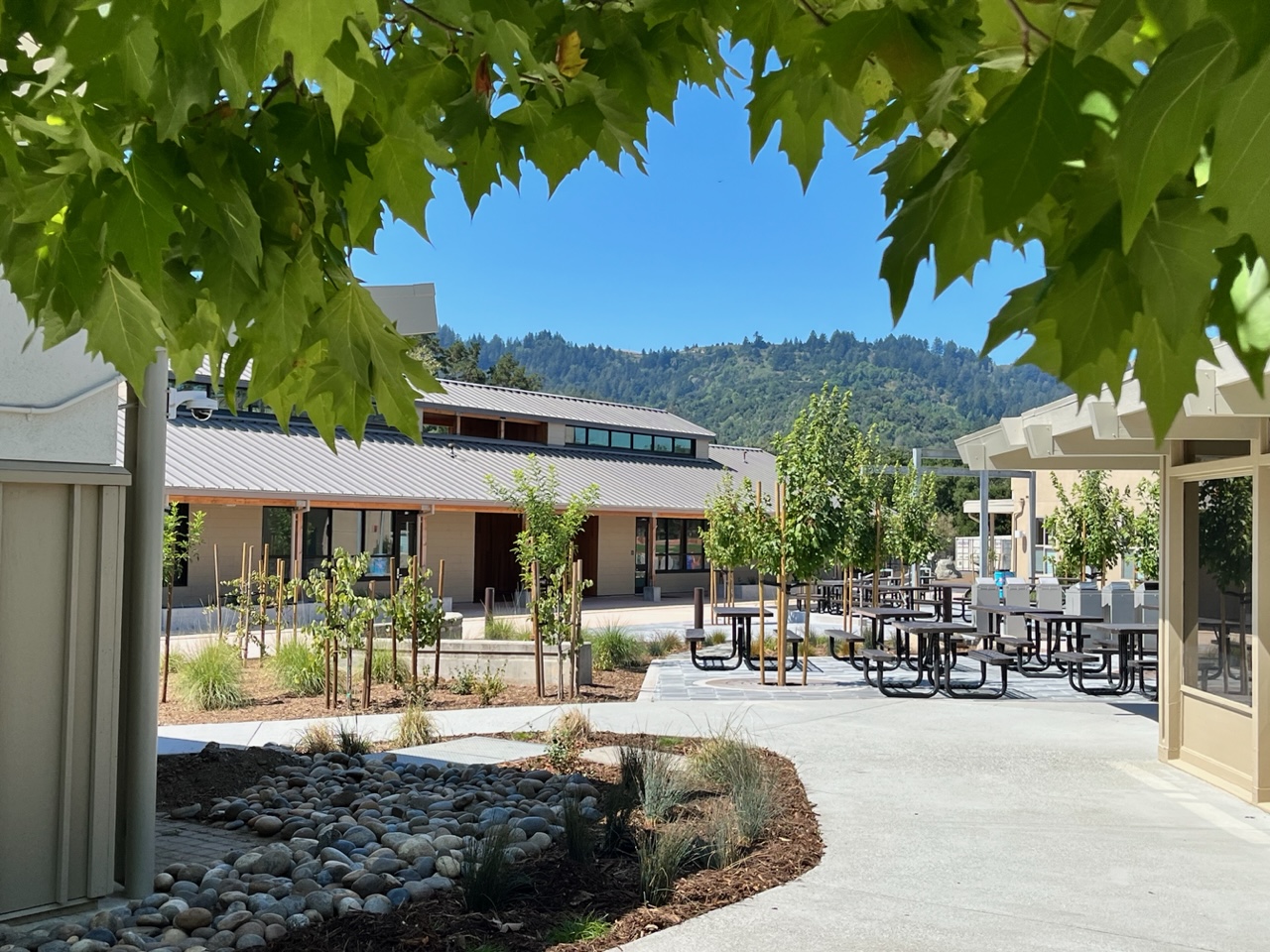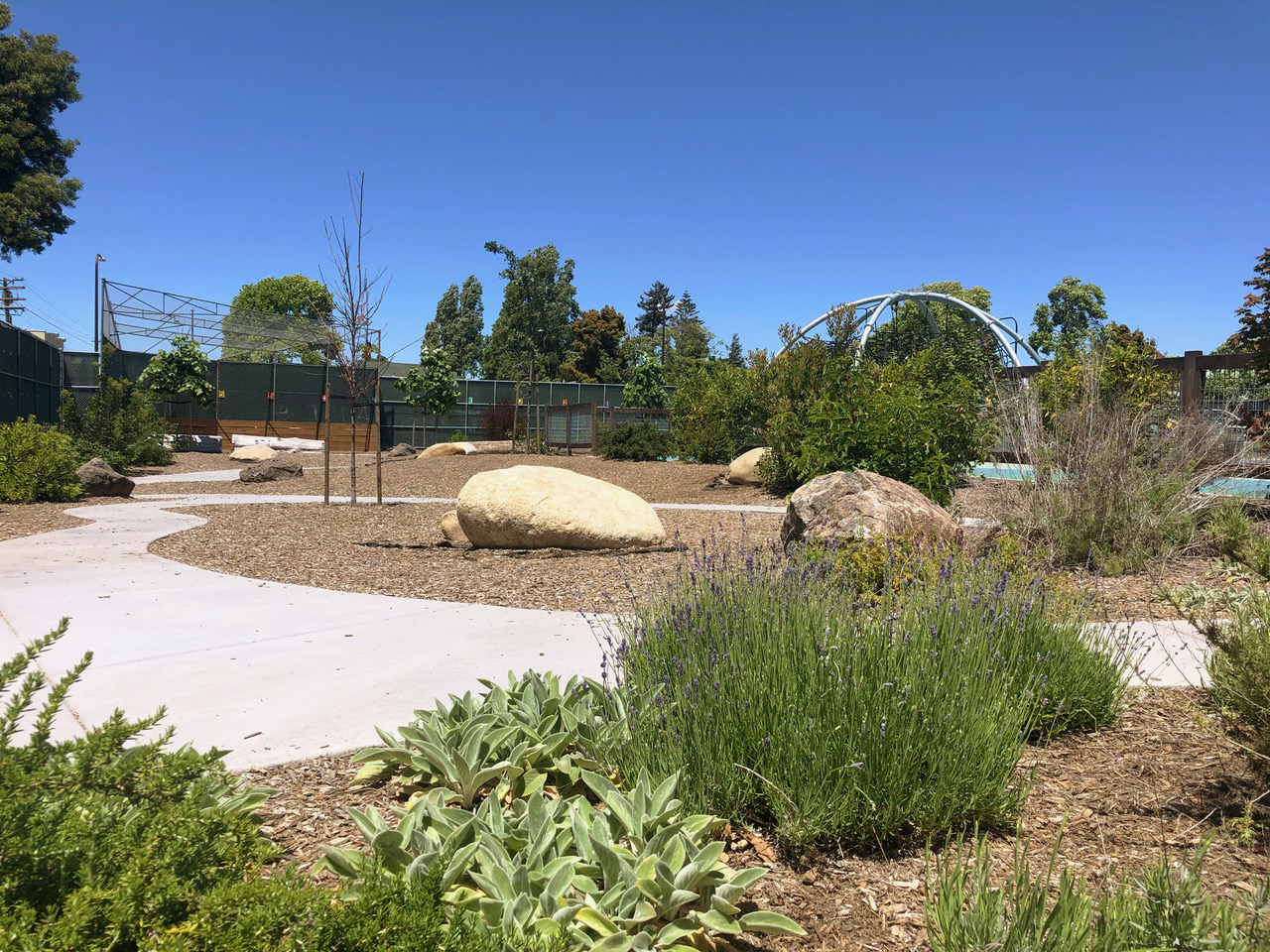We are delighted to announce that Sonoma Ecology Center was recently approved for two CAL FIRE Green Schoolyards planning grants to prepare designs for greening 12 elementary school campuses in the Bay Area.
In collaboration with our partners, we will design plans to plant shade trees, create outdoor classrooms or natural play areas that may replace sections of blacktop, devise new climate-related school curricula, and introduce rainwater capture systems where possible. These plans will be prepared in collaboration between Sonoma Ecology Center and two Bay Area landscape architectural firms: Bay Tree Design for 4 schools in the Bellevue Union School District, Santa Rosa, and Gates and Associates for schools in the Pittsburg Unified School District.

In the upcoming century, extreme heat, exacerbated by the urban heat island effect, is expected to pose serious health risks. By effectively greening and cooling school environments, we aim to create a more effective and safe learning environment for the 12 elementary schools in Bellevue and Pittsburg School Districts. Pictured here: A recent project at Portola Valley School District by Bay Tree Design, one of our partners.
“Being awarded two of these grants is a remarkable achievement indeed; only nine planning grants were funded statewide. We are excited to be able to devise plans to add more shade and introduce outdoor learning experiences for the children in these two school districts, both of which serve primarily under-resourced populations,” said Sonoma Ecology Center’s Board President, Dr. David Morell.

To combat extreme heat and create a greener, safer learning environment for students, we plan to install features such as outdoor classrooms accompanied by increased tree canopy, wildlife habitat, and integrated stormwater management systems. Pictured here: a new installation of an ADA pathway, area for learning with native trees at a Bellevue Union School by Bay Tree Design.
Extreme heat is the number one climate-change induced killer. With expected increasing temperatures and longer heat events due to climate change impacts, adding tree canopy, green pocket forests, and other shade features will be critical for child comfort and safety, especially in urban areas.
Many schools, particularly those serving people living in low-income neighborhoods, have huge blacktop areas with little shade. These areas can create heat islands during hot days, creating temperatures up to 30 degrees hotter than areas with grass, wood chips, or other natural features. By creating shaded, outdoor spaces where students can learn about the natural world and play in the natural environments, we aim to reduce heat-related symptoms, allowing for better learning outcomes.
